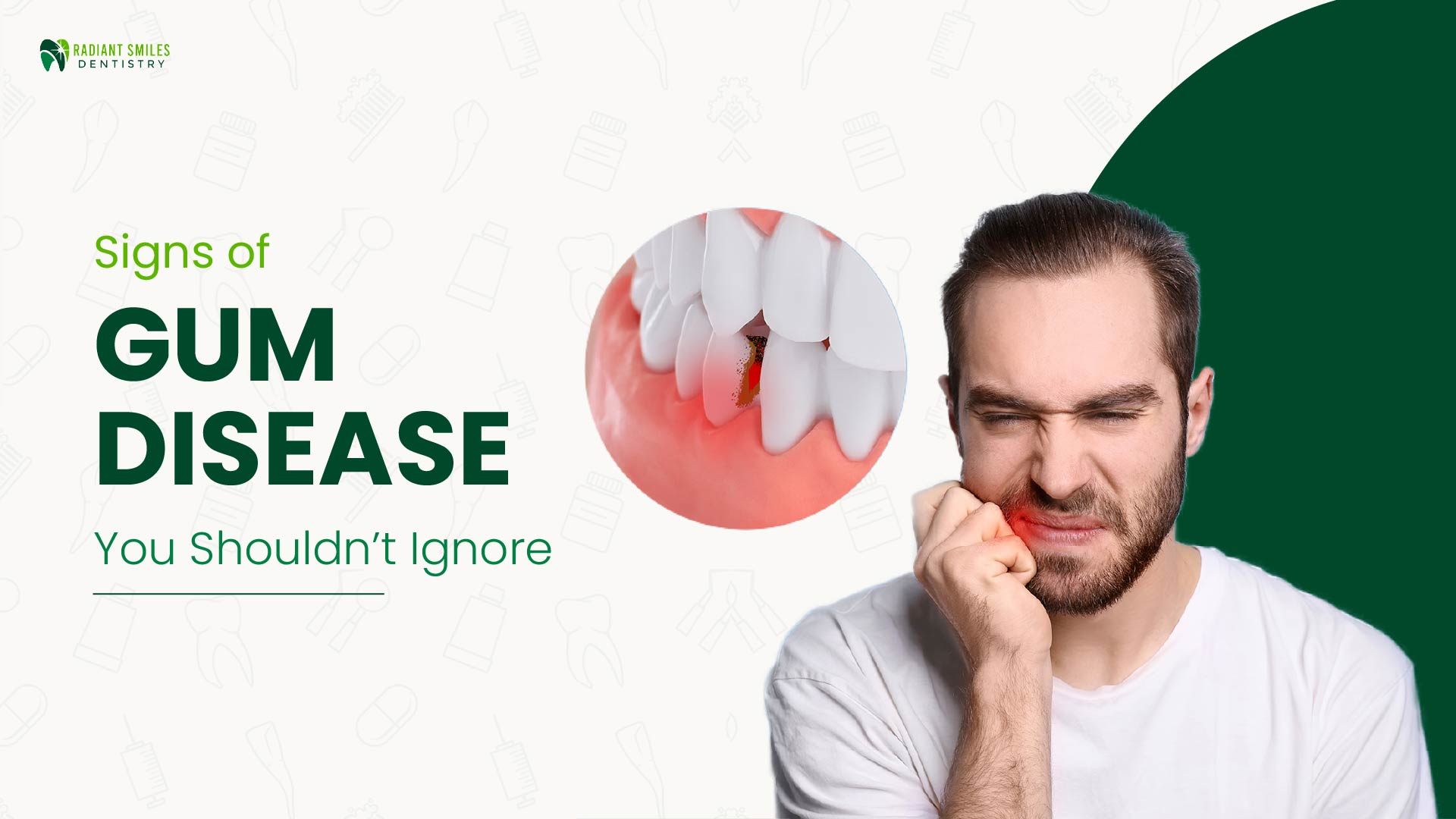What Your Tongue Says About Your Health – A Simple Guide
Have you ever looked in the mirror and noticed that…

Do your gums bleed when brushing? Many people dismiss it as something minor, perhaps brushing too hard or using the wrong toothbrush. But in reality, bleeding gums can be an early warning sign of gum disease, a common yet serious dental condition that affects the tissues supporting your teeth.
Gum disease begins quietly and painlessly, but without proper care, it can progress to periodontitis, leading to gum recession, bone loss, and even tooth loss. Early detection and professional treatment are crucial to saving your smile and maintaining long-term oral health.
If you’re concerned about gum health, visit your trusted dentist in Prosper, TX, for a comprehensive evaluation. Early intervention can prevent permanent damage and help you enjoy a lifetime of healthy gums and teeth.
Gum disease, also known as periodontal disease, is an infection of the gums caused by bacterial plaque buildup. It typically progresses in two stages:
Recognizing periodontal disease signs early allows for timely gum disease treatment and helps preserve your natural teeth.
Explore our full range of preventive care services to maintain healthy gums and prevent gum disease from developing.
If your gums bleed easily during brushing or flossing, it’s not normal; it’s one of the earliest gingivitis symptoms. This happens when plaque irritates your gum tissue, making it inflamed and sensitive. Consistent bleeding is a clear sign that your gums need professional care to prevent further infection and damage.
Healthy gums should be pink and firm. If they appear red, puffy, or sore, this indicates gum inflammation caused by bacterial buildup. Swelling is your body’s natural response to infection, and when left untreated, it can progress to periodontal disease, a more severe and irreversible stage of gum damage.
Chronic bad breath (halitosis) is more than just a hygiene concern; it often points to gum disease. When bacteria accumulate under the gumline, they release toxins that produce a foul odor. If your bad breath persists even after brushing and using mouthwash, you may need professional cleaning or deep periodontal therapy to eliminate infection at its source.
If your teeth look longer than before, your gums may be receding. Receding gums expose the sensitive roots of your teeth, causing discomfort when eating hot, cold, or sweet foods. This can result from ongoing gum disease, weakening the tissue around your teeth. Prompt gum disease treatment can help prevent further gum loss and protect your enamel from erosion.
In advanced stages of periodontal disease, the infection damages the bone that supports your teeth. As a result, your teeth may start to feel loose, shift position, or affect your bite. These are severe warning signs that require immediate professional attention to prevent tooth loss and restore stability to your oral structure.
Ignoring gum disease allows bacteria to spread deeper below the gumline, leading to periodontitis and eventual tooth loss. The infection can also contribute to other health problems such as diabetes, heart disease, and respiratory issues.
Early intervention for gingivitis is simple professional cleanings and improved oral hygiene, which can often reverse the condition. However, once it progresses to periodontitis, more advanced gum disease treatment, such as scaling and root planing or periodontal surgery, may be necessary to restore oral health.
Learn more about our advanced periodontal treatment options to protect your gums and overall well-being.
Detecting gum disease early requires a thorough dental evaluation. During your visit, your dentist for gum disease in Prosper, TX, will:
These diagnostic steps allow your dentist to determine the stage of your gum disease and recommend an appropriate treatment plan.
Book your gum disease evaluation today with our dentist in Prosper, TX, to ensure early detection and effective treatment.
Gum disease prevention starts with consistent oral care and healthy habits. Here’s how to keep your gums in excellent condition:
Simple daily care, combined with professional cleanings, helps prevent gum disease naturally and promotes long-term oral health. Regular checkups are part of our general dentistry services designed to keep your smile healthy year-round.
Gum disease may start small, but its effects can be serious if ignored. Bleeding, swelling, bad breath, and gum recession are all warning signs that require professional care. The sooner you act, the easier and less invasive the treatment becomes.
If you notice any of these symptoms, don’t wait; schedule your appointment with an experienced dentist in Prosper, TX to protect your smile and restore healthy gums. Learn more about our periodontal treatment options and general dentistry services to maintain lasting oral wellness.
Treatment duration depends on the severity. Mild gingivitis can improve within 1–2 weeks of professional cleaning and proper home care. Advanced periodontitis may require several sessions or ongoing maintenance visits to manage.
Most treatments are minimally invasive and performed under local anesthesia for comfort. Post-treatment tenderness is mild and temporary, typically resolving within a few days.
While home care is essential, professional treatment is crucial for removing tartar and infection. At home, maintain proper brushing and flossing, rinse with an antibacterial mouthwash, and eat foods rich in vitamin C to support gum healing.
Have you ever looked in the mirror and noticed that…
General precautionary measures to improve dental health can have a…
General precautionary measures to improve dental health can have a…